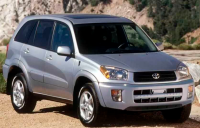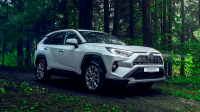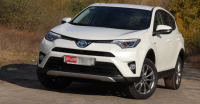In Europe, the Toyota RAV4 has the image of a typically female car. And it has to be serviced every 10,000 kilometres. Does the list of disadvantages end there? We found out how reliable the lauded Japanese is.
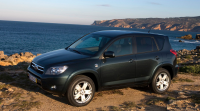
A little bit of history
Toyota RAV4 is the full-fledged ancestor of a class of crossovers constructed on a light basis with a bearing body, but thus with a full drive and big road clearance. The name is deciphered as Recreational Active Vehicle 4 Wheel drive.
RAV4 has dominated the segment for quite a long time and has naturally become one of the most popular on the market. The third generation 'Rafika' (as the model is nicknamed here) hit the market in 2006.
Early 2009 saw a minor restyling and the Long version debuted with a longer base and rear overhang. A more serious update came in mid-2010, when Toyota tried to appeal to a male audience. The exterior has changed drastically and became closer to its right-hand drive Japanese twin - the Vanguard model.
The power-unit has also changed - instead of old 2-liter and 2,4-liter engines, the new "two-liter" from "Avensis" with progressive system Valvematic has appeared, and 4-speed automatic gearbox was replaced by the variator. However, the Long version was sold with the old exterior design, 2.4 engine and automatic gearbox before the generation change.
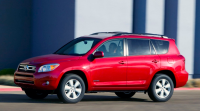
Offer on the market
Despite the fact that the third generation Toyota RAV4 did not live on the market as freely as the first two and had to compete with other crossovers (including Nissan Qashqai), there are plenty of cars on the "secondary" market. So when looking for a car, you shouldn't cling to a particular one - there are plenty of options. There are traditionally fewer first- and last-year cars than 2007-2011. In 2006, the old predecessor stock was sold out and in 2012, buyers waited for the fourth generation. In terms of bodywork, the extended version with three seats, which debuted in 2009, did not become very popular. It only accounted for 7% of the offerings. The remaining 93% are cars with a standard wheelbase. Among the engines, the absolute leader is the old "two-litre" (152 hp). In conjunction with a 4-speed automatic it is installed in 43% of vehicles, and with a 5-speed manual - in 10% of cars.
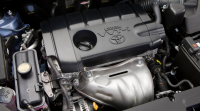
The new two-liter engine (158 hp), which appeared in 2010, is in the second place in popularity. Cars with it and a variator account for 28% and with the 6-speed 'manual' for 2%. It was in this, the least popular version that the Rafiq had front-wheel drive. All others were with all-wheel drive disconnectable. "Americanised" 2.4 engine, which was only offered with an archaic automatic, makes up the last three - 17% of such cars on the market.
Crossovers are a big boon for marketers. A weak set of off-road qualities sells for a good price, and the consumer finds it quite reasonable. Add to that Toyota's image as a manufacturer of "forever" cars, and the result is a fairly slow decline in the RAV4's price in the aftermarket. Even the eight-year-old will cost more than its Chinese "clone" Chery Tiggo.
Surprisingly, the rather substantial 2010 restyling had almost no effect on the average price - the difference between the 2009 and 2010 cars is negligible. In the "glorious" tradition of the aftermarket, the mileage on cars sold over three years old is rarely genuine. Note that the average figure rises quickly in the first three years and slows down after that, as most sellers twist the odometer data. When buying a car, be careful and ask to see the service book and repair records which may indirectly confirm the mileage.

Typical breakdowns and operating problems
Engine
All three engines on the RAV4 are highly reliable. Of course, they are not those Japanese motors from the 80s and 90s that could be bored and run for 600-700k km. Their average service life is about 300 thousand, and after that the wear of cylinders does not allow them to be repaired. With active driving, oil degradation can start by about 150 thousand, the problem is solved by replacing the piston rings.
The timing belt drive is chain, the chain usually serves about 200 thousand. As for fuel, the 2-liter engine can be filled with both Ai-92 and Ai-95. The 2.4-liter 2AZ-FE engine has been created with an eye to the American market, and it is designed only for 92, whatever they advise on forums and in dealers' centres. Early years RAV4 had the design flaw - cooling system pump leak. Almost all cars were fixed for free under warranty.
Transmission
The RAV4's transmissions don't give its owners any problems other than a deliberate effort to 'kill' them. The automatic and variator, for example, don't like towing heavy trailers on snow or mud. Some owners of cars with automatic transmissions notice a slight jolt when shifting from first to second gear.
Transmission
Transmissions on RAV4 do not give problems to their owners, unless one deliberately tries to "kill" them. For example, the automatic and variator don't like slipping in snow or mud and towing heavy trailers. Some owners fix a slight bump on their cars with automatic transmission while shifting from first to second, but the problem is infrequent and annoying; the main thing is not to forget to change oil in gearbox every 60 thousand kilometres. A gearbox sometimes bites the lever in first gear. If the vehicle is all-wheel drive, one should carefully observe the interval of oil replacement in rear differential - the interval should not exceed 40 thousand km. It is worth checking this with the seller when purchasing the car. "Run down" differential will first hum and then refuse to work, leaving the car with front-wheel drive only.
Chassis
The suspension on this car is very reliable. Up to 100 thousand kilometres usually only front stabilizer bushings and front shock absorbers are replaced. If something else has been changed in the car (arms, silent blocks), mileage is obviously more than a hundred, even if the odometer reads a contrary. The weak point is a steering rack, which starts knocking in some cases after 60-70 thousand km. There are sets of tie rods for its repair, with the help of which one can relatively inexpensively prolong a life of the assembly, but sooner or later the rack will have to be replaced all the same.
Electrics
The owners of RAV4 have practically no claims to the electrical system. The only other common fault is the rear brake light switch under the brake pedal, which is burnt out from time to time.
Bodywork
Toyota RAV4 has no tendency to rust, but from humidity and reagent ingress in winter rusty spiders may appear on the bonnet - this part was painted under warranty, as you can see with a thickness gauge. Another typical problem is a sag of rear door hinges due to a spare wheel. By the way, it would be better to put a lock on the spare wheel cover to make the task difficult for thieves.
Interior
The plastic in the interior is, alas, rather rigid and therefore rattles. There are two ways out - to be patient or to disassemble and glue the joints with soft gaskets.
Prices for maintenance service at authorized dealers
Prices are calculated on the example of Toyota RAV4 2009 with 2-liter engine and 4-speed automatic transmission. Traditionally the mileage between services is very short, and prices are high. Thus, even taking into account the relatively high reliability of the car, its maintenance can't be called cheap.
It is necessary to say, that the image of superreliable automobile Toyota RAV4 justifies, if to shut eyes to a problem steering rack. Therefore, it is possible to recommend this model for purchase. It is better, certainly, to take the automobile after restyling in 2010 - the new "two-liter" is not less reliable, but more economical and dynamical. A variator will also please you more than the old "automat".
If you are looking for a car, you can safely choose among pre-restyling RAV4, because their list of "children's diseases" is not so long. From engines it is better to choose "American" 2.4, which is more tolerant to 92-gasoline and provides better dynamics. It is important not to buy the car the owners exploited inappropriately, that is actively driven on very bad roads and off-road. That is why special attention should be paid to the condition of the chassis and rear differential.
For the same money, the same years.
Toyota RAV4 has many direct competitors: Honda CR-V, Mazda CX7, Volkswagen Tiguan, Skoda Yeti, Hyundai Tucson, Mitsubishi Outlander, Kia Sportage, Opel Antara, Chevrolet Captiva, SsangYong Actyon, Ford Kuga. And the Toyota in this list, all other things being equal, costs the most on average.
As well as rivals, we've picked out models in the segment that you could consider as an alternative to the RAV4 in the same price and time ranges. If you need a car for outdoor activities, the crossover will not do - look for a normal SUV with a frame and permanent four-wheel drive. Look for a car for a city - buy business class. Well and if it is a question of regular travelling in the big company, nothing will replace a high-grade minibus.


